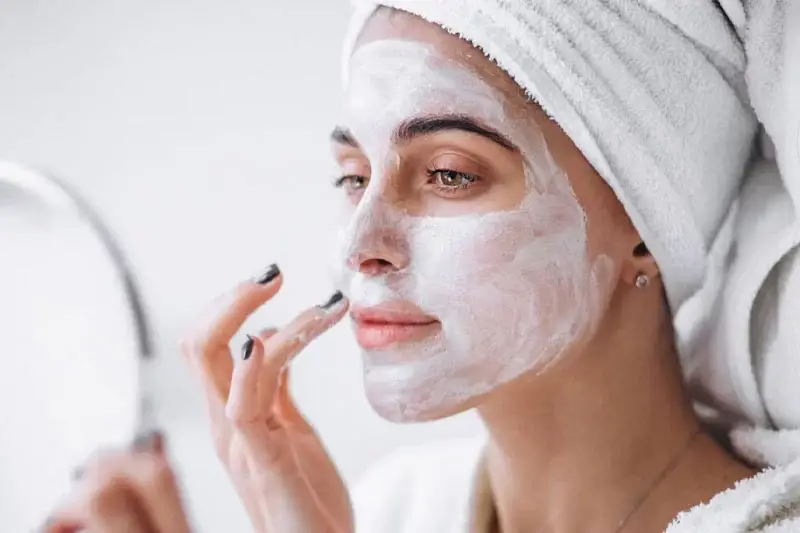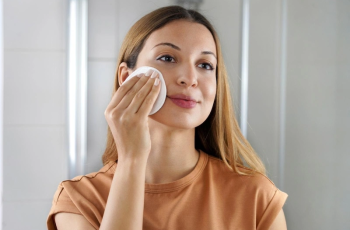
Can retinol and azelaic acid be mixed together?
Azelaic Acid and Retinol are two skincare ingredients that deliver unique and amazing results. You no doubt already know about the benefits of retinol and how it improves the overall appearance of your complexion while helping
to improve skin clarity.
Known as one of the most powerful ingredients for your skin, retinol has a range of skin benefits, from reducing the appearance of fine lines and wrinkles to fighting blemishes and breakouts. Azelaic acid, on the other hand, has
similar benefits but is gentler and can be used on sensitive and rosacea-prone skin.
With these two powerful ingredients delivering such impressive, eye-catching results, it’s no wonder that today’s blog post’s question is going viral. So let’s dig in to see if you can combine retinol and azelaic acid. Before we
get started, though, let’s take a quick look at azelaic acid and retinol and their benefits for your skin.
What Are the Benefits of Azelaic Acid?
Azelaic acid reduces skin inflammation and soothes breakouts of pimples on the skin’s surface.
Azelaic Acid contains antibacterial properties that help remove dirt, bacteria, debris and sebum from pores. Azelaic acid is known for its ability to improve hyperpigmentation, dark spots, sun damage, and post-acne scars.
Azelaic Acid gently exfoliates and removes dead skin cells for a smoother, more even texture and finish on the face. Azelaic acid does not increase skin sensitivity to UV radiation.
If you want to learn more about azelaic acid, you can check out our dedicated blog post on azelaic acid on The Beauty Insiders.
What Are the Benefits of Retinol?
Retinol fights breakouts, pimples and acne.
Retinol works on the lower layers of the skin to help boost collagen and elastin production. Retinol speeds up skin cell turnover, ensuring that signs of hyperpigmentation and dark spots are visibly reduced.
Retinol improves fine lines and wrinkles and compensates for loss of elasticity. Don’t forget, if you want to learn more about the effects of retinol on your skin, check out the What are the benefits of retinol for skin care
blog posts.
Can retinol be used with azelaic acid?
Yes, you can, but be careful if you have a sensitive skin type as too much exfoliation can be taxing on the skin. If you find that your skin is oily and prone to blemishes, the combination of retinol and azelaic acid could be
a powerful combo.
Azelaic acid helps reduce the appearance of hyperpigmentation and dark spots, especially scars caused by acne flare-ups. You’ll also find your skin feels cleansed as the retinol penetrates deep into the skin, unclogging excess
sebum, dirt and bacteria buildup from pores.
When each ingredient works effectively individually or as a team, you’ll notice an improvement in the overall look and feel of your complexion. Reduces pigment spots and treats acne.
An important thing to remember when combining these powerful ingredients is to make sure to apply SPF 30+ daily to ensure skin is protected from free radical damage such as pollution and harmful sun damage.
Which came first: azelaic acid or retinol?
This largely depends on the type of product in which the ingredients are formulated. In a previous blog post, I have explained that the basic rule of skin care is to apply the product from its thinnest to its thickest consistency.
You’ll often find azelaic acid in products like exfoliating toners, serums or face washes, all of which are used at different stages of your skincare routine. As for retinol, this powerful powerhouse is found in products like
serums, face oils, and moisturizers, all of which you’ll use as part of your daily skincare routine.
If you’re still a bit confused, it’s easy to remember the order of application: Retinol should only be used at night. So applying it to cleansed skin before bed makes things easier to remember.
You’ll also find that azelaic acid is effective at exfoliating your skin, which means it removes build-up of dead skin cells and debris to reveal fresher, more absorbent skin underneath, allowing any products you apply
afterwards to penetrate quickly lower level.
Can Niacinamide, Azelaic Acid, and Retinol be used together?
Yes, it is possible, but not at the same time as it might be too much for the skin. Using Niacinamide and Retinol together is completely safe as the moisturizing properties of Niacinamide counteract the drying effects of Retinol
for a more plumped, hydrated and comfortable complexion.
If you use all three ingredients at the same time, you may need to alternate azelaic acid with the combination of retinol and niacinamide. The most effective way to do this is to use an exfoliating tonic rich in azelaic acid
after cleansing in the morning.
You can then apply retinol and niacinamide at night, as this will ensure that enough time passes and the skin’s pH rebalances in the morning.
Is Azelaic Acid Better Than Retinol?
Both azelaic acid and retinol have similar benefits for the skin, but still have their own unique beneficial properties.
Therefore, many people use both active ingredients together in their daily routine to reap the benefits in the quickest and easiest way. So if your skin can tolerate it, use both ingredients together, and of course don’t forget
to apply sunscreen every day to protect against UV rays.


